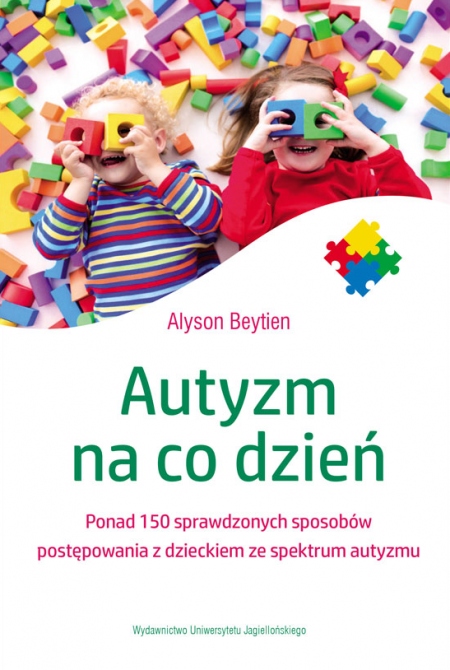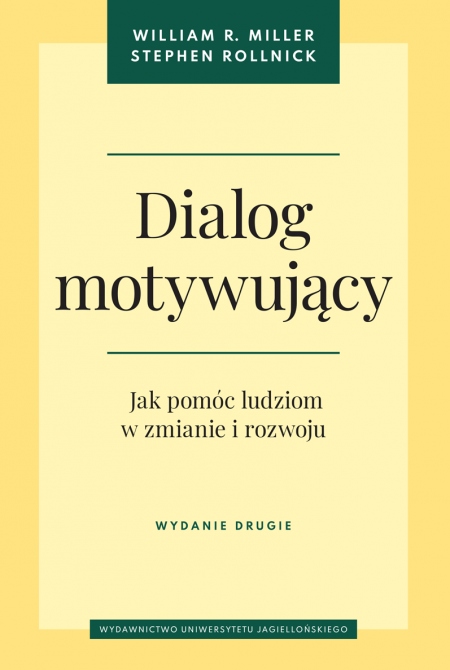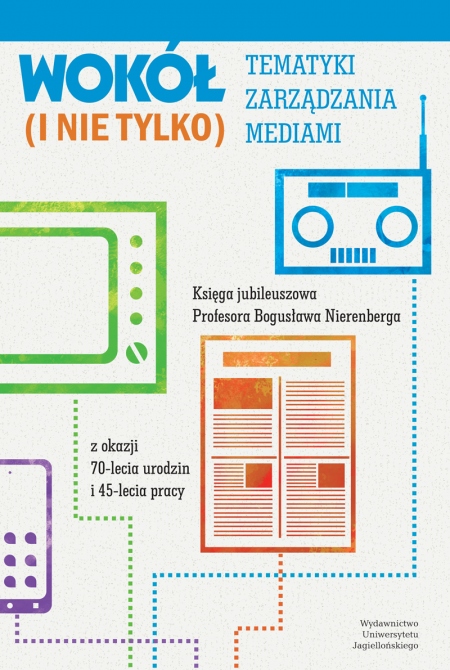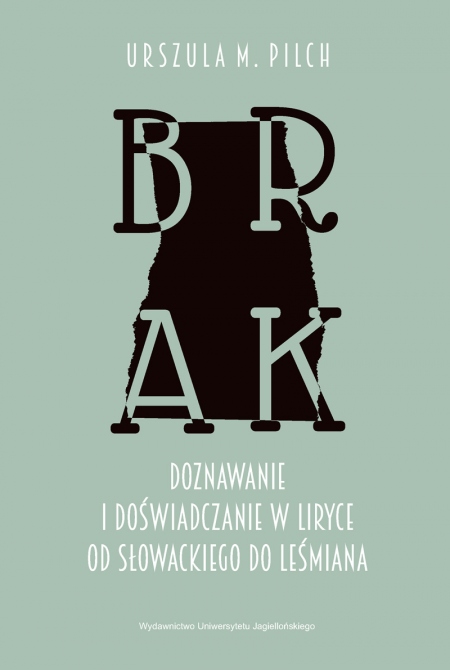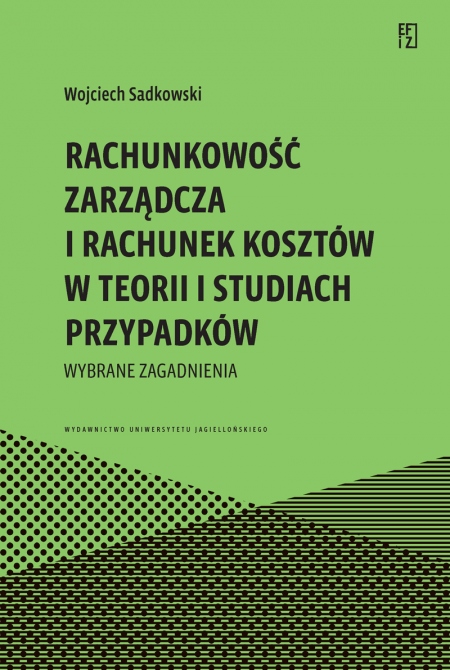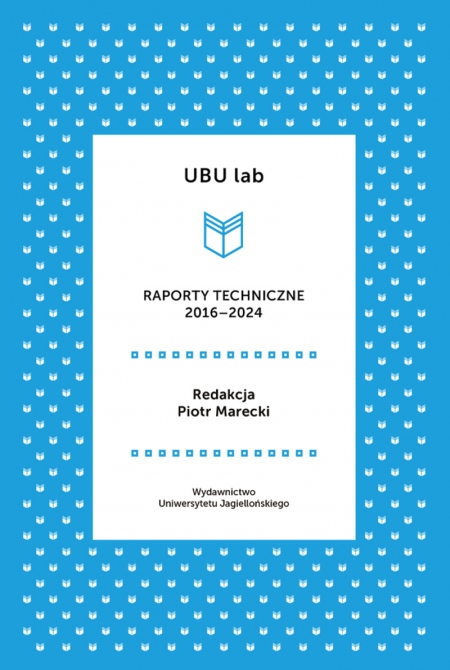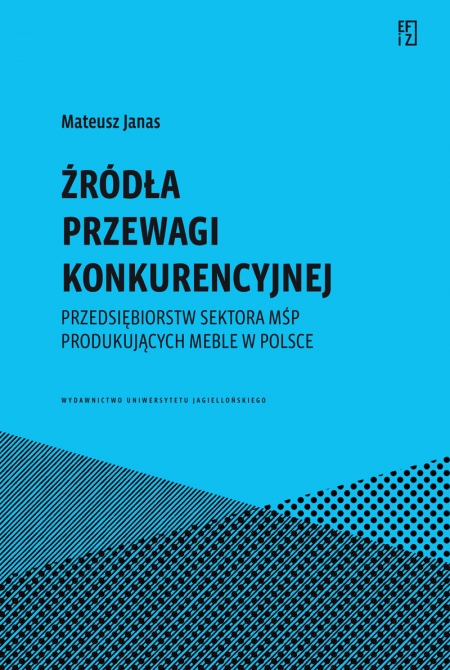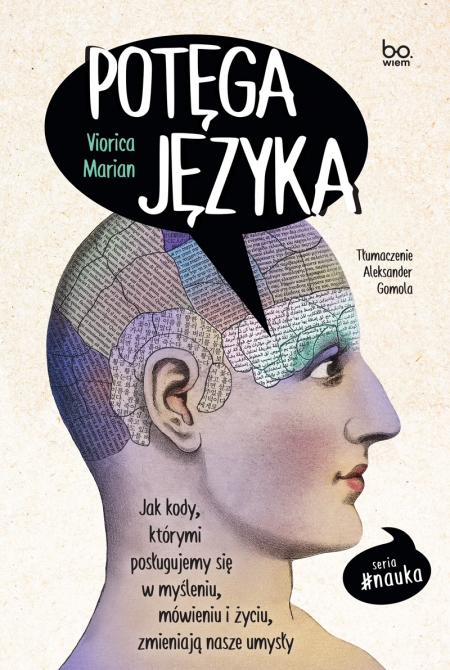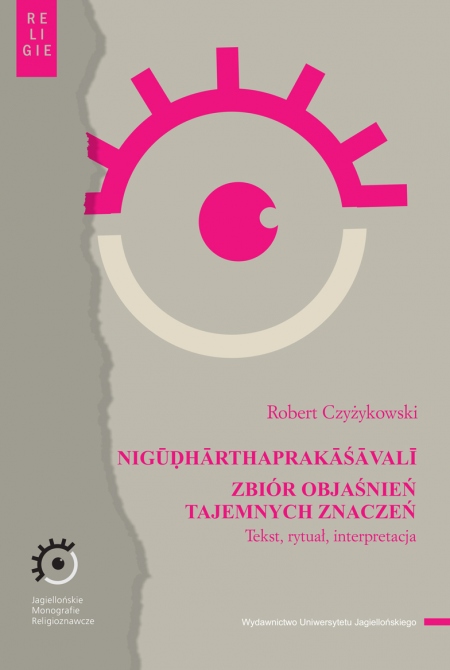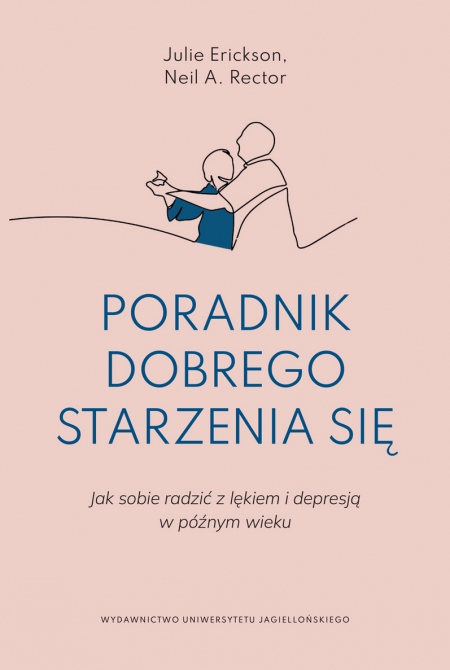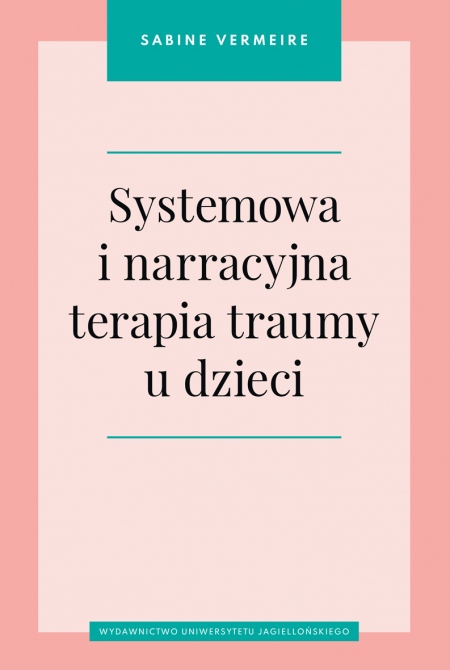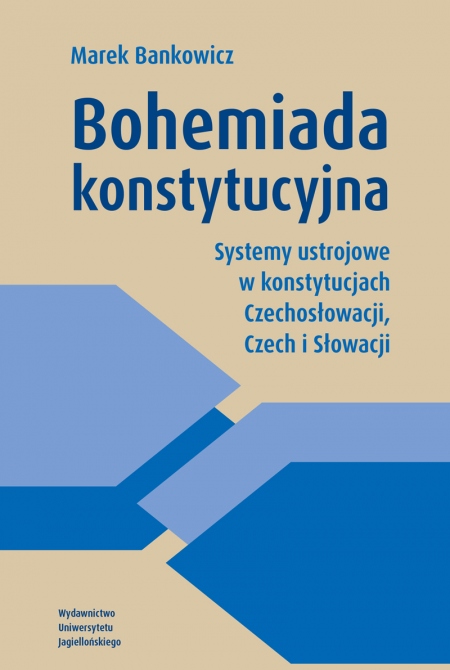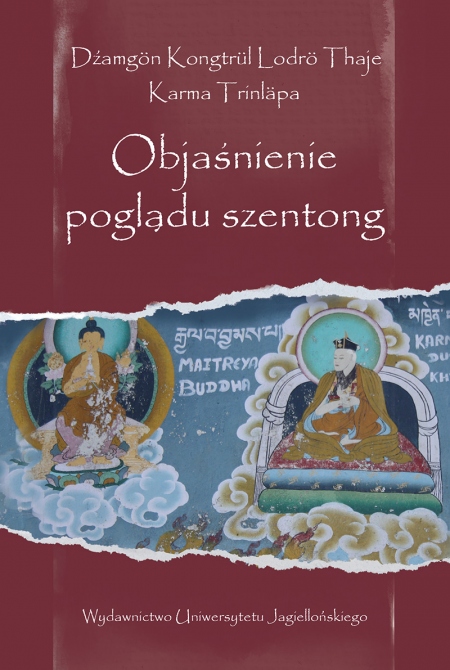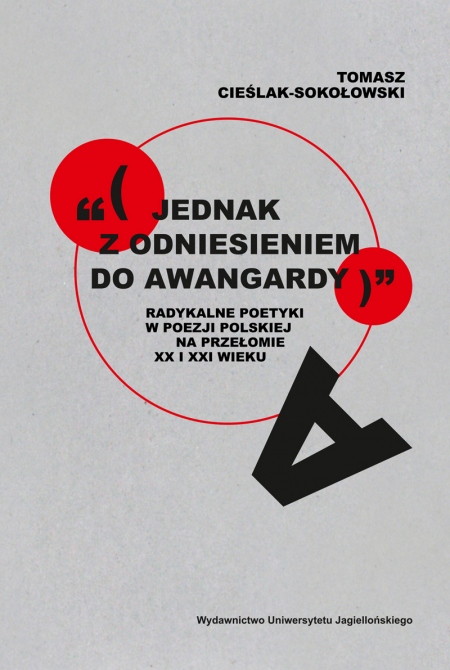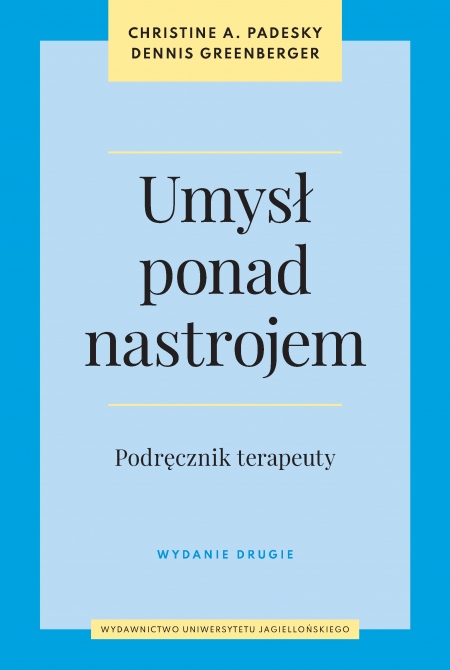Microbial Biotechnology in the Laboratory and Practice
Theory, Exercises, and Specialist Laboratories
Edited by: Jerzy Długoński
Pages: 552
Book format: 16,8x24 cm
Publication date: 2021
Book description
In addition to the issues constituting the basis of microbial biotechnology, such as microorganisms culturing or their use in industry and environmental protection, the book includes modern analytical techniques known as "omics", as well as digital techniques used to record adverse changes in the environment those resulting from the harmful activity of bacteria and fungi. A color atlas (Chapter 8) with photos of the fungi discussed in each chapter was also included. The book was prepared with the use of many years of scientific and didactic experience of the authors who conduct classes in various fields and specializations of natural sciences. This resulted in the interdisciplinary nature of the publication. It will be useful not only for PhD students and students of biotechnology and microbiology, but also environmental protection, ecological biotechnology, urban revitalization, as well as all those interested in applying the latest achievements of these areas of science in practice.
Author
Jerzy Aleksy Długoński, professor of biological sciences, specialization: microbial biotechnology, industrial microbiology and mycology. In 1971, he graduated in biology, specialization in microbiology, at the Faculty of BNZ (Faculty of Biology and Earth Sciences, now the Faculty of Biology and Environmental Protection) at the University of Łódź, Poland. At the same Faculty he defended his doctoral (1979) and habilitation thesis (1993) on the production of anti-inflammatory steroid drugs by bacteria and fungi. After habilitation, he extended his research area to include issues related to microbial detoxification and biodegradation of xenobiotics that are particularly harmful to the environment. In the years 1993-1996 he was the deputy vice-dean of the Faculty of BNZ, University of Lodz, and from 1996-2008 he was the deputy director of the Institute of Microbiology, Biotechnology and Immunology of the University of Łódź. In the years 1994 - 2018 he headed the Department of Industrial Microbiology and Biotechnology, University of Łódź. He is the promoter of 9 defended doctoral theses, two more are nearing completion. Author and co-author of numerous peer-reviewed publications in the field of microbial physiology and biotechnology, including the book Microbial Biodegradation From Omics to Function and Application, which was published in England by a scientific publishing house specializing in publications on the latest achievements of molecular biology - Caister Academic Press UK. Reviewer of numerous doctoral and habilitation theses and applications for the academic title of professor. From 2013 to 2020, he was a member of the Central Committee for Degrees and Titles (Poland). Co-organizer of a number of national and international congresses in the field of microbiology and biotechnology.
ISBN: 978-83-233-4984-6
Country of producer: Poland
RECOMMENDED BOOKS
NEW BOOKS
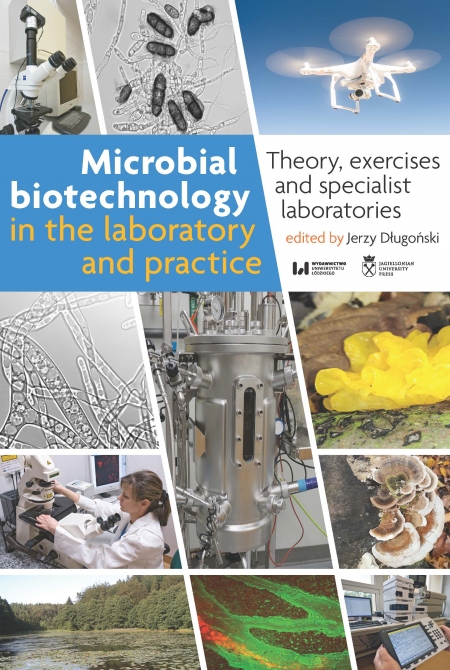
Microbial Biotechnology in the Laboratory and Practice
Theory, Exercises, and Specialist Laboratories
TABLE OF CONTENTS
Foreword (J. Długoński) / 11
Foreword to the handbook Microbiological Biotechnology. Exercises and specialist laboratories from 1997 (J. Długoński) / 15
1. Methods of screening, culturing, improvement and storage of microorganisms of industrial importance / 17
1.1. General characteristics of microorganisms used in biotechnological processes (J. Długoński) / 19
1.2. Screening of microorganisms useful in microbiological processes (J. Długoński, K. Lisowska, N. Wrońska, K. Zawadzka, A. Felczak) / 21
1.2.1. Suitability of various environments for isolation of microorganisms used in industrial processes / 21
1.2.2. Soil as a source of potential producers of biologically active compounds / 22
1.2.3. Microbial screening / 24
1.2.4. Soil of polluted environments as a source of microorganisms used in environmental protection processes / 27
1.3. Methods of culturing and stabilisation of microorganisms under aerobic conditions (including bioreactors and immobilisation in gels) (J. Długoński, P. Bernat, K. Lisowska, S. Walisch) / 33
1.3.1. Batch culture / 34
1.3.2. Fed-batch culture – batch with continuous dosing of nutrient to the fermenter / 37
1.3.3. Continuous culture / 37
1.3.4. Bioreactors for submerged cultures / 40
1.3.5. Stabilisation of microorganisms by immobilization / 42
1.4. Microorganism culture in anaerobic conditions (M. Krupiński) / 47
1.5. Fungal protoplasts: release, properties and application (J. Długoński, K. Paraszkiewicz, M. Słaba, K Milczarek) / 53
1.6. Strain development – mutagenesis, fusion and electroporation of protoplasts (J. Długoński,
D. Wilmańska, S. Różalska, K. Lisowska, K. Milczarek) / 58
1.7. Storage of industrial strains (K. Zawadzka, N. Wrońska, S. Walisch, K. Milczarek, D. Wilmańska) / 74
Literature / 79
2. Fundamentals of modern analytical techniques used in microbial biotechnology and related sciences / 83
2.1. Confocal, fluorescent microscopy and spectrofluorimetry (S. Różalska) / 85
2.1.1. Fluorescence phenomenon / 85
2.1.2. Spectrofluorimetry / 86
2.1.3. Fluorescent and confocal microscopy – comparison / 87
2.1.4. Autofluorescence and fluorescent markers / 89
2.1.5. Fluorescent proteins / 89
2.2. Isotopic techniques (radioactive isotopes) (J. Długoński, S. Różalska) / 93
2.3. Chromatography (R. Szewczyk) / 96
2.3.1. Basic parameters measured in chromatography / 96
2.3.2. Liquid chromatography / 101
2.3.3. Gas chromatography / 106
2.4. Mass spectrometry (R. Szewczyk) / 108
2.4.1. Principle of mass spectrometer operation / 109
2.4.2. Ion sources and ion types in mass spectrometry / 110
2.4.3. Mass analysers / 113
2.4.4. Basic scanning modes / 116
2.4.5. Ion detection / 118
2.4.6. Application of mass spectrometry / 119
2.5. Atomic absorption spectroscopy (M. Słaba) / 119
2.6. Modern digital techniques used to record changes in the environment (A. Długoński) / 124
2.6.1. Satelitte imagery in analyzing historical and last landuse / 125
2.6.2. Principles of detection selected remote sensing systems / 128
2.6.3. Airplane scanning in terrain measurement / 130 Literature / 133
3. Determining the taxonomic affiliation of microorganisms / 137
3.1. Genotypic techniques for differentiation and identification of bacteria (M. Krupiński) / 139
3.1.1. Isolation from the soil and identification of anaerobes by multiplex PCR / 142
3.1.2. Taxonomic classification of the genus Streptomyces based on PCR 16S rRNA method / 149
3.2. Fungi of the phyla Mucoromycota, Ascomycota and Basidiomycota – morphological, biochemical features and genetic analysis (M. Słaba, S. Różalska) / 156
3.2.1. Mucoromycota / 160
3.2.2. Ascomycota / 161
3.2.3. Basidiomycota / 164
3.2.4. Molecular identification of filamentous fungi / 167
3.2.5. Yeast / 171
3.3. Microbial biotyping by LC-MS/MS and MALDI-TOF/TOF methods (R. Szewczyk) / 175
3.3.1. LC-MS/MS biotyping on the example of Mycobacterium strains / 176
3.3.2. MALDI-TOF and MALDI-TOF/TOF biotyping / 182 Literature / 188
4. Industrial applications of microorganisms / 191
4.1. Biosynthesis processes (J. Długoński) / 193
4.1.1. Microbial biomass production and using (P. Bernat) / 194
4.1.2. Characteristics, classification and directions for practical use of surfactants. Screening of Bacillus strains capable of lipopeptide surfactants production. (K. Paraszkiewicz, A. Walaszczyk) / 198
4.1.3. Microbiological production of enzymes from the hydrolase class (J. Długoński, K. Paraszkiewicz, A. Jasińska, K. Milczarek) / 210
4.1.4. Polysaccharides biosynthesis (J. Długoński, S. Różalska) / 219
4.1.5. Antibiotic biosynthesis using tetracyclines as a study model (J. Długoński, P. Bernat) / 230
4.1.6. Production of bacterial lipopeptides (P. Bernat) / 237
4.1.7. Citric acid biosynthesis (S. Walisch, P. Bernat, K. Paraszkiewicz) / 239
4.2. Fermentation processes (J. Długoński) / 244
4.2.1. Winemaking and brewing (S. Walisch, P. Bernat, K. Paraszkiewicz) / 245
4.2.2. Practical use of lactic acid bacteria (S. Walisch, P. Bernat, K. Paraszkiewicz) / 251
4.2.3. Use of microorganisms in the baking industry and for the production of fermented meat and vegetable products (K. Paraszkiewicz, A. Jasińska, A. Góralczyk-Bińkowska) / 257
4.2.4. Asian food obtained by the use of microorganisms (A. Jasińska, A. Góralczyk-Bińkowska, K. Paraszkiewicz) / 270
4.3. Biotransformation processes (J. Długoński) / 277
4.3.1. Biotransformation of ethanol and sorbitol (J. Długoński, S. Walisch) / 277
4.3.2. Biotransformation of steroids (J. Długoński) / 282 Literature / 287
5. Microorganisms in environmental and human health protection / 295
5.1. Revitalisation of degraded urban green areas (A. Długoński) / 297
5.1.1. Interdisciplinary research in urban revitalisation: work stages / 298
5.1.2. Field research in the scope of landscape architecture and related disciplines / 300
5.1.3. Laboratory research in biotechnology, microbiology, environmental chemistry and related disciplines / 302
5.1.4. Total score and summary of research / 304
5.2. Microbiological analysis of polluted environments – Next generation sequencing (S. Różalska) / 310
5.3. Biological wastewater treatment processes / 317
5.3.1. Biological methods of wastewater treatment in municipal treatment plants (K. Lisowska, K. Zawadzka) / 318
5.3.2. Municipal-industrial wastewater treatment (A. Długoński) / 320
5.3.3. Wastewater treatment in scattered areas – small infrastructure (A. Długoński) / 322
5.4. Waste composting (A. Długoński, K. Lisowska) / 325
5.4.1. Waste composting in municipal composting plants / 325
5.4.2. Local use of waste from urban green areas / 327
5.5. Use of municipal green waste for energy production in local biogas and incineration plants and the synthesis of fungal laccases (A. Długoński, A. Góralczyk-Bińkowska) / 330
5.5.1. Energy production / 330
5.5.2. Use of urban green waste for biosynthesis of fungal enzymes on the example of laccases / 332
5.6. Biodegradation of toxic xenobiotics (J. Długoński) / 335
5.6.1. Bisphenol A (A. Jasińska) / 336
5.6.2. Organotin compounds (P. Bernat, A. Felczak, J. Długoński) / 341
5.6.3. Use of microorganisms to eliminate pesticides (P. Bernat) / 345
5.6.4. Nonylphenol (J. Długoński, S. Różalska) / 348
5.6.5. Simultaneous elimination of organic and inorganic pollutants based on the example of alachlor and zinc (M. Słaba, J. Długoński) / 350
5.6.6. Heterocyclic compounds (A. Felczak, N. Wrońska) / 354
5.6.7. Dyes (A. Jasińska, A. Góralczyk-Bińkowska) / 357
5.7. Microbiological elimination of heavy metals from the environment (M. Słaba, J. Nykiel-Szymańska) / 362
5.8. Detoxification processes of polluted environments. Ecotoxicological tests (M. Krupiński) / 371
5.9. Use of industrial waste in microbiological biotechnology (K. Paraszkiewicz, A. Góralczyk-Bińkowska, A. Jasińska) / 377
5.10. Biodeterioration caused by fungi (S. Różalska, M. Słaba, A. Długoński) / 383
5.11. Characteristics and use of ligninolytic enzymes produced by fungi in environmental protection, industry and medicine (A. Jasińska, A. Góralczyk-Bińkowska, A. Długoński) / 391
5.12. Determination of antimicrobial properties of macromolecules (dendrimers) and newly synthesised silver compounds (A. Felczak, K. Zawadzka) / 398
5.13. Entomopathogenic fungi and their use in biocontrol (S. Różalska) / 403
5.14. Toxigenic fungi. Search for and identification of aflatoxins (K. Paraszkiewicz, M. Słaba, R. Szewczyk) / 407 Literature / 418
6. Omics in microbial biotechnology / 431
6.1. Proteomics in microbiological analysis of xenobiotics degradation (R. Szewczyk) / 433
6.1.1. Isolation and separation of proteins / 434
6.1.2. Identification of proteins / 438
6.2. Metabolomic analysis as a tool for multi-level characterisation of the biodegradation process (R. Szewczyk) / 446
6.3. Application of lipidomics in the study of detoxification processes in microorganisms (P. Bernat) / 452
6.4. Search for biomarkers in industry and medicine (R. Szewczyk) / 459
6.4.1. Analytical methods / 460
6.4.2. Characteristics and sources of biomarkers / 460
6.5. Quantitative analysis of pesticides – multimethods (R. Szewczyk) / 464
6.5.1. Multimethods / 464
6.5.2. Method validation / 466 Literature / 470
7. Media, buffers (K. Milczarek, N. Wrońska, A. Felczak) / 473
7.1. Media / 475
7.2. Buffers / 494 Literature / 496
8. Macroscopic and microscopic images of fungal strains applied at the Department of
Industrial Microbiology and Biotechnology at the University of Łódź / 497
8.1. Photographs of fungi cultured under laboratory conditions (K. Milczarek, S. Różalska) / 499
8.1.1. Aureobasidium pullulans / 499
8.1.2. Ashbya gossypii / 500
8.1.3. Aspergillus niger / 501
8.1.4. Aspergillus versicolor IM2161 / 502
8.1.5. Chaetomium globosum / 503
8.1.6. Cunninghamella echinulata IM1785 21Gp (previously C. elegans) / 504
8.1.7. Curvularia lunata IM2901 / 507
8.1.8. Curvularia lunata IM4417 / 510
8.1.9. Exophiala sp. / 511
8.1.10. Kluyveromyces marxianus / 512
8.1.11. Metarhizium robertsii IM2358 / 513
8.1.12. Mucor ramosissimus IM6203 / 514
8.1.13. Myrothecium roridum IM6482 / 516
8.1.14. Nectriella pironii IM6443 / 517
8.1.15. Paecilomyces marquandii IM6003 (currently Metarhizium marquandii) / 518
8.1.16. Phanerochaete chrysosporium DSM1556 / 520
8.1.17. Schizosacharomyces pombe / 521
8.1.18. Serpula himantioides DSM6419 / 523
8.1.19. Stachybotrys chartarum DSM2144 / 524
8.1.20. Trametes versicolor / 525
8.1.21. Trichoderma harzianum QF10 / 527
8.1.22. Trichoderma viride IM6325 / 528
8.1.23. Umbelopsis ramanniana IM833 / 529
8.2. Photographs of trees and wood infected by ligninolytic fungi (A. Długoński) / 530
8.2.1. Pleurotus ostreatus (oyster mushroom) / 530
8.2.2. Trametes versicolor (turkey tail) / 531
8.2.3. Heterobasidion annosum (annosum root rot) / 531
8.2.4. Brown wood rot / 532
8.2.5. White wood rot / 534
8.2.6. Soft wood rot / 535
8.2.7. Tremella mesenterica (yellow brain) / 536
8.2.8. Phellinus pomaceus / 538
8.2.9. Piptorus betulinus (birch polypore) / 539
8.2.10. Fomes fometorius (tinder fungus) / 540
8.2.11. Interaction of pathogens causing the rot of trees / 541
8.2.12. Schizophyllum commune (split gill) / 542
Literature / 543
Authors / 545
Foreword to the handbook Microbiological Biotechnology. Exercises and specialist laboratories from 1997 (J. Długoński) / 15
1. Methods of screening, culturing, improvement and storage of microorganisms of industrial importance / 17
1.1. General characteristics of microorganisms used in biotechnological processes (J. Długoński) / 19
1.2. Screening of microorganisms useful in microbiological processes (J. Długoński, K. Lisowska, N. Wrońska, K. Zawadzka, A. Felczak) / 21
1.2.1. Suitability of various environments for isolation of microorganisms used in industrial processes / 21
1.2.2. Soil as a source of potential producers of biologically active compounds / 22
1.2.3. Microbial screening / 24
1.2.4. Soil of polluted environments as a source of microorganisms used in environmental protection processes / 27
1.3. Methods of culturing and stabilisation of microorganisms under aerobic conditions (including bioreactors and immobilisation in gels) (J. Długoński, P. Bernat, K. Lisowska, S. Walisch) / 33
1.3.1. Batch culture / 34
1.3.2. Fed-batch culture – batch with continuous dosing of nutrient to the fermenter / 37
1.3.3. Continuous culture / 37
1.3.4. Bioreactors for submerged cultures / 40
1.3.5. Stabilisation of microorganisms by immobilization / 42
1.4. Microorganism culture in anaerobic conditions (M. Krupiński) / 47
1.5. Fungal protoplasts: release, properties and application (J. Długoński, K. Paraszkiewicz, M. Słaba, K Milczarek) / 53
1.6. Strain development – mutagenesis, fusion and electroporation of protoplasts (J. Długoński,
D. Wilmańska, S. Różalska, K. Lisowska, K. Milczarek) / 58
1.7. Storage of industrial strains (K. Zawadzka, N. Wrońska, S. Walisch, K. Milczarek, D. Wilmańska) / 74
Literature / 79
2. Fundamentals of modern analytical techniques used in microbial biotechnology and related sciences / 83
2.1. Confocal, fluorescent microscopy and spectrofluorimetry (S. Różalska) / 85
2.1.1. Fluorescence phenomenon / 85
2.1.2. Spectrofluorimetry / 86
2.1.3. Fluorescent and confocal microscopy – comparison / 87
2.1.4. Autofluorescence and fluorescent markers / 89
2.1.5. Fluorescent proteins / 89
2.2. Isotopic techniques (radioactive isotopes) (J. Długoński, S. Różalska) / 93
2.3. Chromatography (R. Szewczyk) / 96
2.3.1. Basic parameters measured in chromatography / 96
2.3.2. Liquid chromatography / 101
2.3.3. Gas chromatography / 106
2.4. Mass spectrometry (R. Szewczyk) / 108
2.4.1. Principle of mass spectrometer operation / 109
2.4.2. Ion sources and ion types in mass spectrometry / 110
2.4.3. Mass analysers / 113
2.4.4. Basic scanning modes / 116
2.4.5. Ion detection / 118
2.4.6. Application of mass spectrometry / 119
2.5. Atomic absorption spectroscopy (M. Słaba) / 119
2.6. Modern digital techniques used to record changes in the environment (A. Długoński) / 124
2.6.1. Satelitte imagery in analyzing historical and last landuse / 125
2.6.2. Principles of detection selected remote sensing systems / 128
2.6.3. Airplane scanning in terrain measurement / 130 Literature / 133
3. Determining the taxonomic affiliation of microorganisms / 137
3.1. Genotypic techniques for differentiation and identification of bacteria (M. Krupiński) / 139
3.1.1. Isolation from the soil and identification of anaerobes by multiplex PCR / 142
3.1.2. Taxonomic classification of the genus Streptomyces based on PCR 16S rRNA method / 149
3.2. Fungi of the phyla Mucoromycota, Ascomycota and Basidiomycota – morphological, biochemical features and genetic analysis (M. Słaba, S. Różalska) / 156
3.2.1. Mucoromycota / 160
3.2.2. Ascomycota / 161
3.2.3. Basidiomycota / 164
3.2.4. Molecular identification of filamentous fungi / 167
3.2.5. Yeast / 171
3.3. Microbial biotyping by LC-MS/MS and MALDI-TOF/TOF methods (R. Szewczyk) / 175
3.3.1. LC-MS/MS biotyping on the example of Mycobacterium strains / 176
3.3.2. MALDI-TOF and MALDI-TOF/TOF biotyping / 182 Literature / 188
4. Industrial applications of microorganisms / 191
4.1. Biosynthesis processes (J. Długoński) / 193
4.1.1. Microbial biomass production and using (P. Bernat) / 194
4.1.2. Characteristics, classification and directions for practical use of surfactants. Screening of Bacillus strains capable of lipopeptide surfactants production. (K. Paraszkiewicz, A. Walaszczyk) / 198
4.1.3. Microbiological production of enzymes from the hydrolase class (J. Długoński, K. Paraszkiewicz, A. Jasińska, K. Milczarek) / 210
4.1.4. Polysaccharides biosynthesis (J. Długoński, S. Różalska) / 219
4.1.5. Antibiotic biosynthesis using tetracyclines as a study model (J. Długoński, P. Bernat) / 230
4.1.6. Production of bacterial lipopeptides (P. Bernat) / 237
4.1.7. Citric acid biosynthesis (S. Walisch, P. Bernat, K. Paraszkiewicz) / 239
4.2. Fermentation processes (J. Długoński) / 244
4.2.1. Winemaking and brewing (S. Walisch, P. Bernat, K. Paraszkiewicz) / 245
4.2.2. Practical use of lactic acid bacteria (S. Walisch, P. Bernat, K. Paraszkiewicz) / 251
4.2.3. Use of microorganisms in the baking industry and for the production of fermented meat and vegetable products (K. Paraszkiewicz, A. Jasińska, A. Góralczyk-Bińkowska) / 257
4.2.4. Asian food obtained by the use of microorganisms (A. Jasińska, A. Góralczyk-Bińkowska, K. Paraszkiewicz) / 270
4.3. Biotransformation processes (J. Długoński) / 277
4.3.1. Biotransformation of ethanol and sorbitol (J. Długoński, S. Walisch) / 277
4.3.2. Biotransformation of steroids (J. Długoński) / 282 Literature / 287
5. Microorganisms in environmental and human health protection / 295
5.1. Revitalisation of degraded urban green areas (A. Długoński) / 297
5.1.1. Interdisciplinary research in urban revitalisation: work stages / 298
5.1.2. Field research in the scope of landscape architecture and related disciplines / 300
5.1.3. Laboratory research in biotechnology, microbiology, environmental chemistry and related disciplines / 302
5.1.4. Total score and summary of research / 304
5.2. Microbiological analysis of polluted environments – Next generation sequencing (S. Różalska) / 310
5.3. Biological wastewater treatment processes / 317
5.3.1. Biological methods of wastewater treatment in municipal treatment plants (K. Lisowska, K. Zawadzka) / 318
5.3.2. Municipal-industrial wastewater treatment (A. Długoński) / 320
5.3.3. Wastewater treatment in scattered areas – small infrastructure (A. Długoński) / 322
5.4. Waste composting (A. Długoński, K. Lisowska) / 325
5.4.1. Waste composting in municipal composting plants / 325
5.4.2. Local use of waste from urban green areas / 327
5.5. Use of municipal green waste for energy production in local biogas and incineration plants and the synthesis of fungal laccases (A. Długoński, A. Góralczyk-Bińkowska) / 330
5.5.1. Energy production / 330
5.5.2. Use of urban green waste for biosynthesis of fungal enzymes on the example of laccases / 332
5.6. Biodegradation of toxic xenobiotics (J. Długoński) / 335
5.6.1. Bisphenol A (A. Jasińska) / 336
5.6.2. Organotin compounds (P. Bernat, A. Felczak, J. Długoński) / 341
5.6.3. Use of microorganisms to eliminate pesticides (P. Bernat) / 345
5.6.4. Nonylphenol (J. Długoński, S. Różalska) / 348
5.6.5. Simultaneous elimination of organic and inorganic pollutants based on the example of alachlor and zinc (M. Słaba, J. Długoński) / 350
5.6.6. Heterocyclic compounds (A. Felczak, N. Wrońska) / 354
5.6.7. Dyes (A. Jasińska, A. Góralczyk-Bińkowska) / 357
5.7. Microbiological elimination of heavy metals from the environment (M. Słaba, J. Nykiel-Szymańska) / 362
5.8. Detoxification processes of polluted environments. Ecotoxicological tests (M. Krupiński) / 371
5.9. Use of industrial waste in microbiological biotechnology (K. Paraszkiewicz, A. Góralczyk-Bińkowska, A. Jasińska) / 377
5.10. Biodeterioration caused by fungi (S. Różalska, M. Słaba, A. Długoński) / 383
5.11. Characteristics and use of ligninolytic enzymes produced by fungi in environmental protection, industry and medicine (A. Jasińska, A. Góralczyk-Bińkowska, A. Długoński) / 391
5.12. Determination of antimicrobial properties of macromolecules (dendrimers) and newly synthesised silver compounds (A. Felczak, K. Zawadzka) / 398
5.13. Entomopathogenic fungi and their use in biocontrol (S. Różalska) / 403
5.14. Toxigenic fungi. Search for and identification of aflatoxins (K. Paraszkiewicz, M. Słaba, R. Szewczyk) / 407 Literature / 418
6. Omics in microbial biotechnology / 431
6.1. Proteomics in microbiological analysis of xenobiotics degradation (R. Szewczyk) / 433
6.1.1. Isolation and separation of proteins / 434
6.1.2. Identification of proteins / 438
6.2. Metabolomic analysis as a tool for multi-level characterisation of the biodegradation process (R. Szewczyk) / 446
6.3. Application of lipidomics in the study of detoxification processes in microorganisms (P. Bernat) / 452
6.4. Search for biomarkers in industry and medicine (R. Szewczyk) / 459
6.4.1. Analytical methods / 460
6.4.2. Characteristics and sources of biomarkers / 460
6.5. Quantitative analysis of pesticides – multimethods (R. Szewczyk) / 464
6.5.1. Multimethods / 464
6.5.2. Method validation / 466 Literature / 470
7. Media, buffers (K. Milczarek, N. Wrońska, A. Felczak) / 473
7.1. Media / 475
7.2. Buffers / 494 Literature / 496
8. Macroscopic and microscopic images of fungal strains applied at the Department of
Industrial Microbiology and Biotechnology at the University of Łódź / 497
8.1. Photographs of fungi cultured under laboratory conditions (K. Milczarek, S. Różalska) / 499
8.1.1. Aureobasidium pullulans / 499
8.1.2. Ashbya gossypii / 500
8.1.3. Aspergillus niger / 501
8.1.4. Aspergillus versicolor IM2161 / 502
8.1.5. Chaetomium globosum / 503
8.1.6. Cunninghamella echinulata IM1785 21Gp (previously C. elegans) / 504
8.1.7. Curvularia lunata IM2901 / 507
8.1.8. Curvularia lunata IM4417 / 510
8.1.9. Exophiala sp. / 511
8.1.10. Kluyveromyces marxianus / 512
8.1.11. Metarhizium robertsii IM2358 / 513
8.1.12. Mucor ramosissimus IM6203 / 514
8.1.13. Myrothecium roridum IM6482 / 516
8.1.14. Nectriella pironii IM6443 / 517
8.1.15. Paecilomyces marquandii IM6003 (currently Metarhizium marquandii) / 518
8.1.16. Phanerochaete chrysosporium DSM1556 / 520
8.1.17. Schizosacharomyces pombe / 521
8.1.18. Serpula himantioides DSM6419 / 523
8.1.19. Stachybotrys chartarum DSM2144 / 524
8.1.20. Trametes versicolor / 525
8.1.21. Trichoderma harzianum QF10 / 527
8.1.22. Trichoderma viride IM6325 / 528
8.1.23. Umbelopsis ramanniana IM833 / 529
8.2. Photographs of trees and wood infected by ligninolytic fungi (A. Długoński) / 530
8.2.1. Pleurotus ostreatus (oyster mushroom) / 530
8.2.2. Trametes versicolor (turkey tail) / 531
8.2.3. Heterobasidion annosum (annosum root rot) / 531
8.2.4. Brown wood rot / 532
8.2.5. White wood rot / 534
8.2.6. Soft wood rot / 535
8.2.7. Tremella mesenterica (yellow brain) / 536
8.2.8. Phellinus pomaceus / 538
8.2.9. Piptorus betulinus (birch polypore) / 539
8.2.10. Fomes fometorius (tinder fungus) / 540
8.2.11. Interaction of pathogens causing the rot of trees / 541
8.2.12. Schizophyllum commune (split gill) / 542
Literature / 543
Authors / 545
Microbial Biotechnology in the Laboratory and Practice
Theory, Exercises, and Specialist Laboratories
TABLE OF CONTENTS
Foreword (J. Długoński) / 11
Foreword to the handbook Microbiological Biotechnology. Exercises and specialist laboratories from 1997 (J. Długoński) / 15
1. Methods of screening, culturing, improvement and storage of microorganisms of industrial importance / 17
1.1. General characteristics of microorganisms used in biotechnological processes (J. Długoński) / 19
1.2. Screening of microorganisms useful in microbiological processes (J. Długoński, K. Lisowska, N. Wrońska, K. Zawadzka, A. Felczak) / 21
1.2.1. Suitability of various environments for isolation of microorganisms used in industrial processes / 21
1.2.2. Soil as a source of potential producers of biologically active compounds / 22
1.2.3. Microbial screening / 24
1.2.4. Soil of polluted environments as a source of microorganisms used in environmental protection processes / 27
1.3. Methods of culturing and stabilisation of microorganisms under aerobic conditions (including bioreactors and immobilisation in gels) (J. Długoński, P. Bernat, K. Lisowska, S. Walisch) / 33
1.3.1. Batch culture / 34
1.3.2. Fed-batch culture – batch with continuous dosing of nutrient to the fermenter / 37
1.3.3. Continuous culture / 37
1.3.4. Bioreactors for submerged cultures / 40
1.3.5. Stabilisation of microorganisms by immobilization / 42
1.4. Microorganism culture in anaerobic conditions (M. Krupiński) / 47
1.5. Fungal protoplasts: release, properties and application (J. Długoński, K. Paraszkiewicz, M. Słaba, K Milczarek) / 53
1.6. Strain development – mutagenesis, fusion and electroporation of protoplasts (J. Długoński,
D. Wilmańska, S. Różalska, K. Lisowska, K. Milczarek) / 58
1.7. Storage of industrial strains (K. Zawadzka, N. Wrońska, S. Walisch, K. Milczarek, D. Wilmańska) / 74
Literature / 79
2. Fundamentals of modern analytical techniques used in microbial biotechnology and related sciences / 83
2.1. Confocal, fluorescent microscopy and spectrofluorimetry (S. Różalska) / 85
2.1.1. Fluorescence phenomenon / 85
2.1.2. Spectrofluorimetry / 86
2.1.3. Fluorescent and confocal microscopy – comparison / 87
2.1.4. Autofluorescence and fluorescent markers / 89
2.1.5. Fluorescent proteins / 89
2.2. Isotopic techniques (radioactive isotopes) (J. Długoński, S. Różalska) / 93
2.3. Chromatography (R. Szewczyk) / 96
2.3.1. Basic parameters measured in chromatography / 96
2.3.2. Liquid chromatography / 101
2.3.3. Gas chromatography / 106
2.4. Mass spectrometry (R. Szewczyk) / 108
2.4.1. Principle of mass spectrometer operation / 109
2.4.2. Ion sources and ion types in mass spectrometry / 110
2.4.3. Mass analysers / 113
2.4.4. Basic scanning modes / 116
2.4.5. Ion detection / 118
2.4.6. Application of mass spectrometry / 119
2.5. Atomic absorption spectroscopy (M. Słaba) / 119
2.6. Modern digital techniques used to record changes in the environment (A. Długoński) / 124
2.6.1. Satelitte imagery in analyzing historical and last landuse / 125
2.6.2. Principles of detection selected remote sensing systems / 128
2.6.3. Airplane scanning in terrain measurement / 130 Literature / 133
3. Determining the taxonomic affiliation of microorganisms / 137
3.1. Genotypic techniques for differentiation and identification of bacteria (M. Krupiński) / 139
3.1.1. Isolation from the soil and identification of anaerobes by multiplex PCR / 142
3.1.2. Taxonomic classification of the genus Streptomyces based on PCR 16S rRNA method / 149
3.2. Fungi of the phyla Mucoromycota, Ascomycota and Basidiomycota – morphological, biochemical features and genetic analysis (M. Słaba, S. Różalska) / 156
3.2.1. Mucoromycota / 160
3.2.2. Ascomycota / 161
3.2.3. Basidiomycota / 164
3.2.4. Molecular identification of filamentous fungi / 167
3.2.5. Yeast / 171
3.3. Microbial biotyping by LC-MS/MS and MALDI-TOF/TOF methods (R. Szewczyk) / 175
3.3.1. LC-MS/MS biotyping on the example of Mycobacterium strains / 176
3.3.2. MALDI-TOF and MALDI-TOF/TOF biotyping / 182 Literature / 188
4. Industrial applications of microorganisms / 191
4.1. Biosynthesis processes (J. Długoński) / 193
4.1.1. Microbial biomass production and using (P. Bernat) / 194
4.1.2. Characteristics, classification and directions for practical use of surfactants. Screening of Bacillus strains capable of lipopeptide surfactants production. (K. Paraszkiewicz, A. Walaszczyk) / 198
4.1.3. Microbiological production of enzymes from the hydrolase class (J. Długoński, K. Paraszkiewicz, A. Jasińska, K. Milczarek) / 210
4.1.4. Polysaccharides biosynthesis (J. Długoński, S. Różalska) / 219
4.1.5. Antibiotic biosynthesis using tetracyclines as a study model (J. Długoński, P. Bernat) / 230
4.1.6. Production of bacterial lipopeptides (P. Bernat) / 237
4.1.7. Citric acid biosynthesis (S. Walisch, P. Bernat, K. Paraszkiewicz) / 239
4.2. Fermentation processes (J. Długoński) / 244
4.2.1. Winemaking and brewing (S. Walisch, P. Bernat, K. Paraszkiewicz) / 245
4.2.2. Practical use of lactic acid bacteria (S. Walisch, P. Bernat, K. Paraszkiewicz) / 251
4.2.3. Use of microorganisms in the baking industry and for the production of fermented meat and vegetable products (K. Paraszkiewicz, A. Jasińska, A. Góralczyk-Bińkowska) / 257
4.2.4. Asian food obtained by the use of microorganisms (A. Jasińska, A. Góralczyk-Bińkowska, K. Paraszkiewicz) / 270
4.3. Biotransformation processes (J. Długoński) / 277
4.3.1. Biotransformation of ethanol and sorbitol (J. Długoński, S. Walisch) / 277
4.3.2. Biotransformation of steroids (J. Długoński) / 282 Literature / 287
5. Microorganisms in environmental and human health protection / 295
5.1. Revitalisation of degraded urban green areas (A. Długoński) / 297
5.1.1. Interdisciplinary research in urban revitalisation: work stages / 298
5.1.2. Field research in the scope of landscape architecture and related disciplines / 300
5.1.3. Laboratory research in biotechnology, microbiology, environmental chemistry and related disciplines / 302
5.1.4. Total score and summary of research / 304
5.2. Microbiological analysis of polluted environments – Next generation sequencing (S. Różalska) / 310
5.3. Biological wastewater treatment processes / 317
5.3.1. Biological methods of wastewater treatment in municipal treatment plants (K. Lisowska, K. Zawadzka) / 318
5.3.2. Municipal-industrial wastewater treatment (A. Długoński) / 320
5.3.3. Wastewater treatment in scattered areas – small infrastructure (A. Długoński) / 322
5.4. Waste composting (A. Długoński, K. Lisowska) / 325
5.4.1. Waste composting in municipal composting plants / 325
5.4.2. Local use of waste from urban green areas / 327
5.5. Use of municipal green waste for energy production in local biogas and incineration plants and the synthesis of fungal laccases (A. Długoński, A. Góralczyk-Bińkowska) / 330
5.5.1. Energy production / 330
5.5.2. Use of urban green waste for biosynthesis of fungal enzymes on the example of laccases / 332
5.6. Biodegradation of toxic xenobiotics (J. Długoński) / 335
5.6.1. Bisphenol A (A. Jasińska) / 336
5.6.2. Organotin compounds (P. Bernat, A. Felczak, J. Długoński) / 341
5.6.3. Use of microorganisms to eliminate pesticides (P. Bernat) / 345
5.6.4. Nonylphenol (J. Długoński, S. Różalska) / 348
5.6.5. Simultaneous elimination of organic and inorganic pollutants based on the example of alachlor and zinc (M. Słaba, J. Długoński) / 350
5.6.6. Heterocyclic compounds (A. Felczak, N. Wrońska) / 354
5.6.7. Dyes (A. Jasińska, A. Góralczyk-Bińkowska) / 357
5.7. Microbiological elimination of heavy metals from the environment (M. Słaba, J. Nykiel-Szymańska) / 362
5.8. Detoxification processes of polluted environments. Ecotoxicological tests (M. Krupiński) / 371
5.9. Use of industrial waste in microbiological biotechnology (K. Paraszkiewicz, A. Góralczyk-Bińkowska, A. Jasińska) / 377
5.10. Biodeterioration caused by fungi (S. Różalska, M. Słaba, A. Długoński) / 383
5.11. Characteristics and use of ligninolytic enzymes produced by fungi in environmental protection, industry and medicine (A. Jasińska, A. Góralczyk-Bińkowska, A. Długoński) / 391
5.12. Determination of antimicrobial properties of macromolecules (dendrimers) and newly synthesised silver compounds (A. Felczak, K. Zawadzka) / 398
5.13. Entomopathogenic fungi and their use in biocontrol (S. Różalska) / 403
5.14. Toxigenic fungi. Search for and identification of aflatoxins (K. Paraszkiewicz, M. Słaba, R. Szewczyk) / 407 Literature / 418
6. Omics in microbial biotechnology / 431
6.1. Proteomics in microbiological analysis of xenobiotics degradation (R. Szewczyk) / 433
6.1.1. Isolation and separation of proteins / 434
6.1.2. Identification of proteins / 438
6.2. Metabolomic analysis as a tool for multi-level characterisation of the biodegradation process (R. Szewczyk) / 446
6.3. Application of lipidomics in the study of detoxification processes in microorganisms (P. Bernat) / 452
6.4. Search for biomarkers in industry and medicine (R. Szewczyk) / 459
6.4.1. Analytical methods / 460
6.4.2. Characteristics and sources of biomarkers / 460
6.5. Quantitative analysis of pesticides – multimethods (R. Szewczyk) / 464
6.5.1. Multimethods / 464
6.5.2. Method validation / 466 Literature / 470
7. Media, buffers (K. Milczarek, N. Wrońska, A. Felczak) / 473
7.1. Media / 475
7.2. Buffers / 494 Literature / 496
8. Macroscopic and microscopic images of fungal strains applied at the Department of
Industrial Microbiology and Biotechnology at the University of Łódź / 497
8.1. Photographs of fungi cultured under laboratory conditions (K. Milczarek, S. Różalska) / 499
8.1.1. Aureobasidium pullulans / 499
8.1.2. Ashbya gossypii / 500
8.1.3. Aspergillus niger / 501
8.1.4. Aspergillus versicolor IM2161 / 502
8.1.5. Chaetomium globosum / 503
8.1.6. Cunninghamella echinulata IM1785 21Gp (previously C. elegans) / 504
8.1.7. Curvularia lunata IM2901 / 507
8.1.8. Curvularia lunata IM4417 / 510
8.1.9. Exophiala sp. / 511
8.1.10. Kluyveromyces marxianus / 512
8.1.11. Metarhizium robertsii IM2358 / 513
8.1.12. Mucor ramosissimus IM6203 / 514
8.1.13. Myrothecium roridum IM6482 / 516
8.1.14. Nectriella pironii IM6443 / 517
8.1.15. Paecilomyces marquandii IM6003 (currently Metarhizium marquandii) / 518
8.1.16. Phanerochaete chrysosporium DSM1556 / 520
8.1.17. Schizosacharomyces pombe / 521
8.1.18. Serpula himantioides DSM6419 / 523
8.1.19. Stachybotrys chartarum DSM2144 / 524
8.1.20. Trametes versicolor / 525
8.1.21. Trichoderma harzianum QF10 / 527
8.1.22. Trichoderma viride IM6325 / 528
8.1.23. Umbelopsis ramanniana IM833 / 529
8.2. Photographs of trees and wood infected by ligninolytic fungi (A. Długoński) / 530
8.2.1. Pleurotus ostreatus (oyster mushroom) / 530
8.2.2. Trametes versicolor (turkey tail) / 531
8.2.3. Heterobasidion annosum (annosum root rot) / 531
8.2.4. Brown wood rot / 532
8.2.5. White wood rot / 534
8.2.6. Soft wood rot / 535
8.2.7. Tremella mesenterica (yellow brain) / 536
8.2.8. Phellinus pomaceus / 538
8.2.9. Piptorus betulinus (birch polypore) / 539
8.2.10. Fomes fometorius (tinder fungus) / 540
8.2.11. Interaction of pathogens causing the rot of trees / 541
8.2.12. Schizophyllum commune (split gill) / 542
Literature / 543
Authors / 545
Foreword to the handbook Microbiological Biotechnology. Exercises and specialist laboratories from 1997 (J. Długoński) / 15
1. Methods of screening, culturing, improvement and storage of microorganisms of industrial importance / 17
1.1. General characteristics of microorganisms used in biotechnological processes (J. Długoński) / 19
1.2. Screening of microorganisms useful in microbiological processes (J. Długoński, K. Lisowska, N. Wrońska, K. Zawadzka, A. Felczak) / 21
1.2.1. Suitability of various environments for isolation of microorganisms used in industrial processes / 21
1.2.2. Soil as a source of potential producers of biologically active compounds / 22
1.2.3. Microbial screening / 24
1.2.4. Soil of polluted environments as a source of microorganisms used in environmental protection processes / 27
1.3. Methods of culturing and stabilisation of microorganisms under aerobic conditions (including bioreactors and immobilisation in gels) (J. Długoński, P. Bernat, K. Lisowska, S. Walisch) / 33
1.3.1. Batch culture / 34
1.3.2. Fed-batch culture – batch with continuous dosing of nutrient to the fermenter / 37
1.3.3. Continuous culture / 37
1.3.4. Bioreactors for submerged cultures / 40
1.3.5. Stabilisation of microorganisms by immobilization / 42
1.4. Microorganism culture in anaerobic conditions (M. Krupiński) / 47
1.5. Fungal protoplasts: release, properties and application (J. Długoński, K. Paraszkiewicz, M. Słaba, K Milczarek) / 53
1.6. Strain development – mutagenesis, fusion and electroporation of protoplasts (J. Długoński,
D. Wilmańska, S. Różalska, K. Lisowska, K. Milczarek) / 58
1.7. Storage of industrial strains (K. Zawadzka, N. Wrońska, S. Walisch, K. Milczarek, D. Wilmańska) / 74
Literature / 79
2. Fundamentals of modern analytical techniques used in microbial biotechnology and related sciences / 83
2.1. Confocal, fluorescent microscopy and spectrofluorimetry (S. Różalska) / 85
2.1.1. Fluorescence phenomenon / 85
2.1.2. Spectrofluorimetry / 86
2.1.3. Fluorescent and confocal microscopy – comparison / 87
2.1.4. Autofluorescence and fluorescent markers / 89
2.1.5. Fluorescent proteins / 89
2.2. Isotopic techniques (radioactive isotopes) (J. Długoński, S. Różalska) / 93
2.3. Chromatography (R. Szewczyk) / 96
2.3.1. Basic parameters measured in chromatography / 96
2.3.2. Liquid chromatography / 101
2.3.3. Gas chromatography / 106
2.4. Mass spectrometry (R. Szewczyk) / 108
2.4.1. Principle of mass spectrometer operation / 109
2.4.2. Ion sources and ion types in mass spectrometry / 110
2.4.3. Mass analysers / 113
2.4.4. Basic scanning modes / 116
2.4.5. Ion detection / 118
2.4.6. Application of mass spectrometry / 119
2.5. Atomic absorption spectroscopy (M. Słaba) / 119
2.6. Modern digital techniques used to record changes in the environment (A. Długoński) / 124
2.6.1. Satelitte imagery in analyzing historical and last landuse / 125
2.6.2. Principles of detection selected remote sensing systems / 128
2.6.3. Airplane scanning in terrain measurement / 130 Literature / 133
3. Determining the taxonomic affiliation of microorganisms / 137
3.1. Genotypic techniques for differentiation and identification of bacteria (M. Krupiński) / 139
3.1.1. Isolation from the soil and identification of anaerobes by multiplex PCR / 142
3.1.2. Taxonomic classification of the genus Streptomyces based on PCR 16S rRNA method / 149
3.2. Fungi of the phyla Mucoromycota, Ascomycota and Basidiomycota – morphological, biochemical features and genetic analysis (M. Słaba, S. Różalska) / 156
3.2.1. Mucoromycota / 160
3.2.2. Ascomycota / 161
3.2.3. Basidiomycota / 164
3.2.4. Molecular identification of filamentous fungi / 167
3.2.5. Yeast / 171
3.3. Microbial biotyping by LC-MS/MS and MALDI-TOF/TOF methods (R. Szewczyk) / 175
3.3.1. LC-MS/MS biotyping on the example of Mycobacterium strains / 176
3.3.2. MALDI-TOF and MALDI-TOF/TOF biotyping / 182 Literature / 188
4. Industrial applications of microorganisms / 191
4.1. Biosynthesis processes (J. Długoński) / 193
4.1.1. Microbial biomass production and using (P. Bernat) / 194
4.1.2. Characteristics, classification and directions for practical use of surfactants. Screening of Bacillus strains capable of lipopeptide surfactants production. (K. Paraszkiewicz, A. Walaszczyk) / 198
4.1.3. Microbiological production of enzymes from the hydrolase class (J. Długoński, K. Paraszkiewicz, A. Jasińska, K. Milczarek) / 210
4.1.4. Polysaccharides biosynthesis (J. Długoński, S. Różalska) / 219
4.1.5. Antibiotic biosynthesis using tetracyclines as a study model (J. Długoński, P. Bernat) / 230
4.1.6. Production of bacterial lipopeptides (P. Bernat) / 237
4.1.7. Citric acid biosynthesis (S. Walisch, P. Bernat, K. Paraszkiewicz) / 239
4.2. Fermentation processes (J. Długoński) / 244
4.2.1. Winemaking and brewing (S. Walisch, P. Bernat, K. Paraszkiewicz) / 245
4.2.2. Practical use of lactic acid bacteria (S. Walisch, P. Bernat, K. Paraszkiewicz) / 251
4.2.3. Use of microorganisms in the baking industry and for the production of fermented meat and vegetable products (K. Paraszkiewicz, A. Jasińska, A. Góralczyk-Bińkowska) / 257
4.2.4. Asian food obtained by the use of microorganisms (A. Jasińska, A. Góralczyk-Bińkowska, K. Paraszkiewicz) / 270
4.3. Biotransformation processes (J. Długoński) / 277
4.3.1. Biotransformation of ethanol and sorbitol (J. Długoński, S. Walisch) / 277
4.3.2. Biotransformation of steroids (J. Długoński) / 282 Literature / 287
5. Microorganisms in environmental and human health protection / 295
5.1. Revitalisation of degraded urban green areas (A. Długoński) / 297
5.1.1. Interdisciplinary research in urban revitalisation: work stages / 298
5.1.2. Field research in the scope of landscape architecture and related disciplines / 300
5.1.3. Laboratory research in biotechnology, microbiology, environmental chemistry and related disciplines / 302
5.1.4. Total score and summary of research / 304
5.2. Microbiological analysis of polluted environments – Next generation sequencing (S. Różalska) / 310
5.3. Biological wastewater treatment processes / 317
5.3.1. Biological methods of wastewater treatment in municipal treatment plants (K. Lisowska, K. Zawadzka) / 318
5.3.2. Municipal-industrial wastewater treatment (A. Długoński) / 320
5.3.3. Wastewater treatment in scattered areas – small infrastructure (A. Długoński) / 322
5.4. Waste composting (A. Długoński, K. Lisowska) / 325
5.4.1. Waste composting in municipal composting plants / 325
5.4.2. Local use of waste from urban green areas / 327
5.5. Use of municipal green waste for energy production in local biogas and incineration plants and the synthesis of fungal laccases (A. Długoński, A. Góralczyk-Bińkowska) / 330
5.5.1. Energy production / 330
5.5.2. Use of urban green waste for biosynthesis of fungal enzymes on the example of laccases / 332
5.6. Biodegradation of toxic xenobiotics (J. Długoński) / 335
5.6.1. Bisphenol A (A. Jasińska) / 336
5.6.2. Organotin compounds (P. Bernat, A. Felczak, J. Długoński) / 341
5.6.3. Use of microorganisms to eliminate pesticides (P. Bernat) / 345
5.6.4. Nonylphenol (J. Długoński, S. Różalska) / 348
5.6.5. Simultaneous elimination of organic and inorganic pollutants based on the example of alachlor and zinc (M. Słaba, J. Długoński) / 350
5.6.6. Heterocyclic compounds (A. Felczak, N. Wrońska) / 354
5.6.7. Dyes (A. Jasińska, A. Góralczyk-Bińkowska) / 357
5.7. Microbiological elimination of heavy metals from the environment (M. Słaba, J. Nykiel-Szymańska) / 362
5.8. Detoxification processes of polluted environments. Ecotoxicological tests (M. Krupiński) / 371
5.9. Use of industrial waste in microbiological biotechnology (K. Paraszkiewicz, A. Góralczyk-Bińkowska, A. Jasińska) / 377
5.10. Biodeterioration caused by fungi (S. Różalska, M. Słaba, A. Długoński) / 383
5.11. Characteristics and use of ligninolytic enzymes produced by fungi in environmental protection, industry and medicine (A. Jasińska, A. Góralczyk-Bińkowska, A. Długoński) / 391
5.12. Determination of antimicrobial properties of macromolecules (dendrimers) and newly synthesised silver compounds (A. Felczak, K. Zawadzka) / 398
5.13. Entomopathogenic fungi and their use in biocontrol (S. Różalska) / 403
5.14. Toxigenic fungi. Search for and identification of aflatoxins (K. Paraszkiewicz, M. Słaba, R. Szewczyk) / 407 Literature / 418
6. Omics in microbial biotechnology / 431
6.1. Proteomics in microbiological analysis of xenobiotics degradation (R. Szewczyk) / 433
6.1.1. Isolation and separation of proteins / 434
6.1.2. Identification of proteins / 438
6.2. Metabolomic analysis as a tool for multi-level characterisation of the biodegradation process (R. Szewczyk) / 446
6.3. Application of lipidomics in the study of detoxification processes in microorganisms (P. Bernat) / 452
6.4. Search for biomarkers in industry and medicine (R. Szewczyk) / 459
6.4.1. Analytical methods / 460
6.4.2. Characteristics and sources of biomarkers / 460
6.5. Quantitative analysis of pesticides – multimethods (R. Szewczyk) / 464
6.5.1. Multimethods / 464
6.5.2. Method validation / 466 Literature / 470
7. Media, buffers (K. Milczarek, N. Wrońska, A. Felczak) / 473
7.1. Media / 475
7.2. Buffers / 494 Literature / 496
8. Macroscopic and microscopic images of fungal strains applied at the Department of
Industrial Microbiology and Biotechnology at the University of Łódź / 497
8.1. Photographs of fungi cultured under laboratory conditions (K. Milczarek, S. Różalska) / 499
8.1.1. Aureobasidium pullulans / 499
8.1.2. Ashbya gossypii / 500
8.1.3. Aspergillus niger / 501
8.1.4. Aspergillus versicolor IM2161 / 502
8.1.5. Chaetomium globosum / 503
8.1.6. Cunninghamella echinulata IM1785 21Gp (previously C. elegans) / 504
8.1.7. Curvularia lunata IM2901 / 507
8.1.8. Curvularia lunata IM4417 / 510
8.1.9. Exophiala sp. / 511
8.1.10. Kluyveromyces marxianus / 512
8.1.11. Metarhizium robertsii IM2358 / 513
8.1.12. Mucor ramosissimus IM6203 / 514
8.1.13. Myrothecium roridum IM6482 / 516
8.1.14. Nectriella pironii IM6443 / 517
8.1.15. Paecilomyces marquandii IM6003 (currently Metarhizium marquandii) / 518
8.1.16. Phanerochaete chrysosporium DSM1556 / 520
8.1.17. Schizosacharomyces pombe / 521
8.1.18. Serpula himantioides DSM6419 / 523
8.1.19. Stachybotrys chartarum DSM2144 / 524
8.1.20. Trametes versicolor / 525
8.1.21. Trichoderma harzianum QF10 / 527
8.1.22. Trichoderma viride IM6325 / 528
8.1.23. Umbelopsis ramanniana IM833 / 529
8.2. Photographs of trees and wood infected by ligninolytic fungi (A. Długoński) / 530
8.2.1. Pleurotus ostreatus (oyster mushroom) / 530
8.2.2. Trametes versicolor (turkey tail) / 531
8.2.3. Heterobasidion annosum (annosum root rot) / 531
8.2.4. Brown wood rot / 532
8.2.5. White wood rot / 534
8.2.6. Soft wood rot / 535
8.2.7. Tremella mesenterica (yellow brain) / 536
8.2.8. Phellinus pomaceus / 538
8.2.9. Piptorus betulinus (birch polypore) / 539
8.2.10. Fomes fometorius (tinder fungus) / 540
8.2.11. Interaction of pathogens causing the rot of trees / 541
8.2.12. Schizophyllum commune (split gill) / 542
Literature / 543
Authors / 545
Choose chapters to buy:
Order value:
0.00 zł



